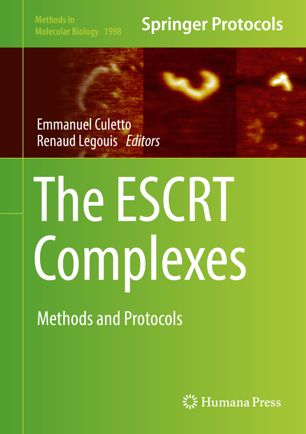Functional Analysis of ESCRT-Positive Extracellular Vesicles in the Drosophila Wing Imaginal Disc.
Methods Mol Biol. 2019;1998:31-47. doi: 10.1007/978-1-4939-9492-2_3.
Matusek T1, Thérond P2, Fürthauer M3.
Author information
1. Université Côte d’Azur, CNRS, Inserm, iBV, France.
2. Université Côte d’Azur, CNRS, Inserm, iBV, France. therond@unice.fr.
3. Université Côte d’Azur, CNRS, Inserm, iBV, France. furthauer@unice.fr.
Abstract
A large number of studies have shown that proteins of the Endosomal Sorting Complex Required for Transport (ESCRT) can trigger the biogenesis of different types of Extracellular Vesicles (EV). The functions that these vesicular carriers exert in vivo remain, however, poorly understood. In this chapter, we describe a series of experimental approaches that we established in the Drosophila wing imaginal disc to study the importance of ESCRT-positive EVs for the extracellular transport of signaling molecules, as exemplified by a functional analysis of the mechanism of secretion and propagation of the major developmental morphogen Hedgehog (Hh).Through the combined use of genetic, cell biological, and imaging approaches, we investigate four important aspects of exovesicle biology: (1) The genetic identification of ESCRT proteins that are specifically required for Hh secretion. (2) The imaging of ESCRT and Hh-positive EVs in the lumenal space of both living and fixed wing imaginal discs. (3) The receptor-mediated capture of Hh-containing EVs on the surface of Hh-receiving cells. (4) The effect of manipulations of ESCRT function on the extracellular pool of Hh ligands.
PMID: 31250292
DOI:10.1007/978-1-4939-9492-2_3

